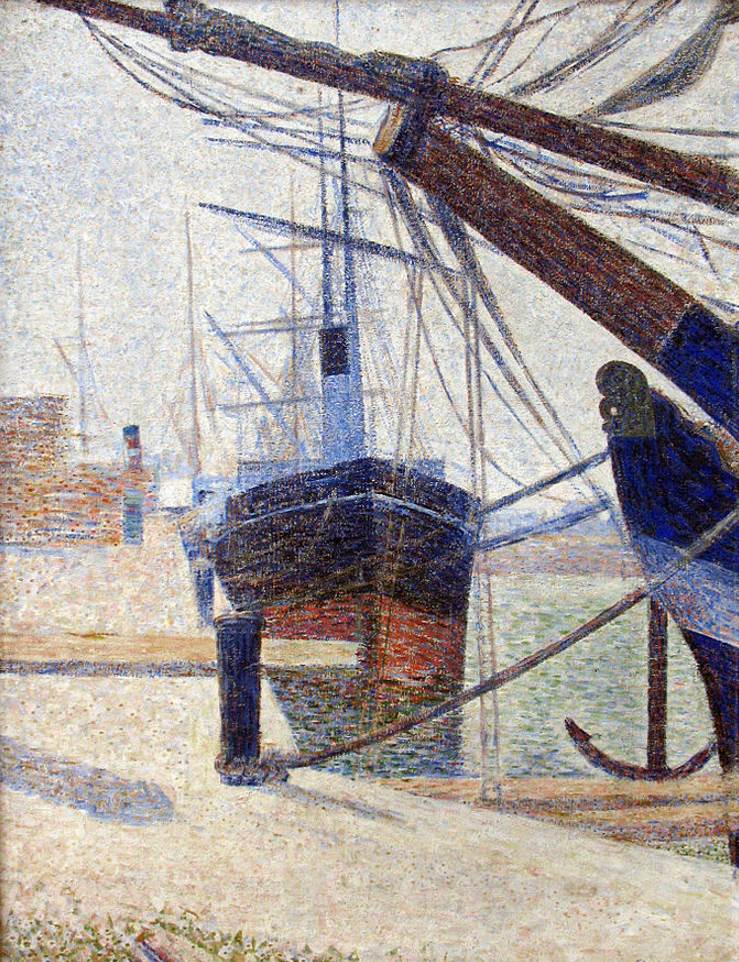When an aspiring French artist was keen on transforming the world of art in the late 19th century, he did exactly what he attempted.
Georges Seurat (1859-1891) briefly received a formal education at the École des Beaux-Arts in Paris, one of the most prestigious art academies in the country.
When he returned from military duties in the year 1879, he had set his mind to developing a new painting technique now known as Pointillism.
He displayed his first major painting at the Groupe des Artistes Indépendants, but disgruntled about the event, became one of the founders of the “Salon des Indépendants.”
This and his mathematical approach to art which ignited Neo-Impressionism were just a few of his achievements. Seurat’s life was cut short due to an undiagnosed illness when he was just 31 years old.
In this article, you’ll discover some of the most famous paintings by Georges Seurat.
1. A Sunday Afternoon on the Island of La Grande Jatte
- Date created: 1884-1886
- Dimensions: 207.6 × 308 centimeters (81.7 × 121.25 inches)
- Location: Art Institute of Chicago, Chicago, United States
A Sunday on La Grande Jatte or “A Sunday Afternoon on the Island of La Grande Jatte” is a monumental work of art by Georges Seurat. It’s his most famous painting and the epitome of the Pointillist technique which he perfected in the early 1880s.
The painting depicts a large number of people who are having a good time at La Grande Jatte, an island on the River Seine. This relatively large island is located in the northwestern suburbs of Paris and was a popular place to hang out for the bourgeoisie of Paris at the time, especially to mingle with prostitutes.
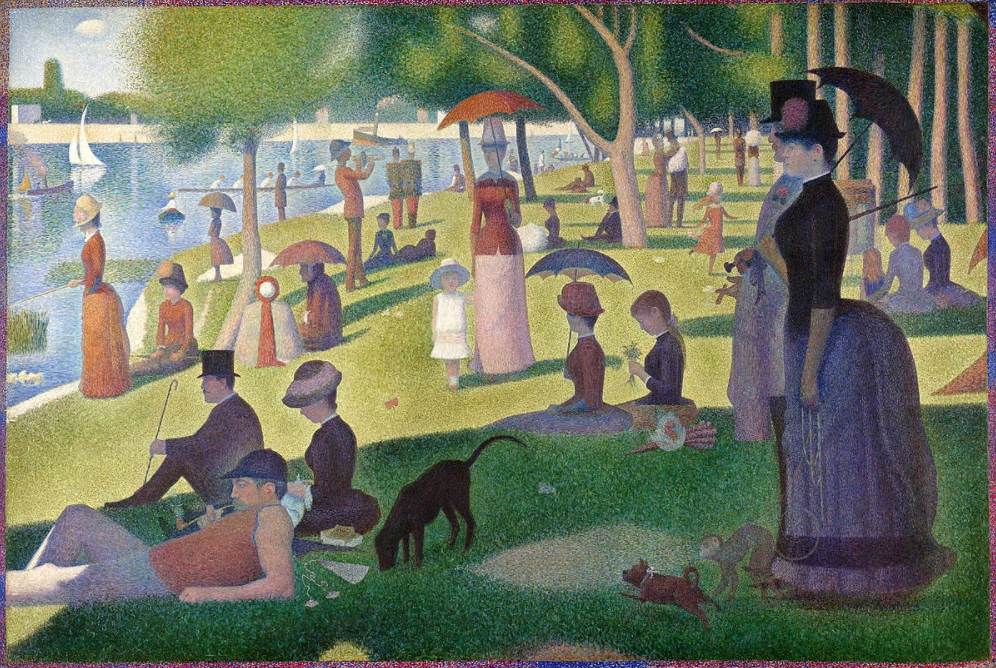
2. Bathers at Asnières
- Date created: 1884
- Dimensions: 201 × 301 centimeters (79 × 118 inches)
- Location: National Gallery, London, United Kingdom
Bathers at Asnières was the first monumental painting that Georges Seurat produced and is considered to be an accompanying painting of A Sunday on La Grande Jatte. As you can see from both works, it appears as if both groups of people are directly staring at each other from across the Seine River.
While Seurat’s second major painting depicts the Bourgeoisie, Bathers at Asnières depicts common people who are enjoying swimming in the river. The factories that produced clouds of black smoke in the distance are symbols of the notion that these are working-class people. The jury of the Paris Salon of 1884 rejected this painting.
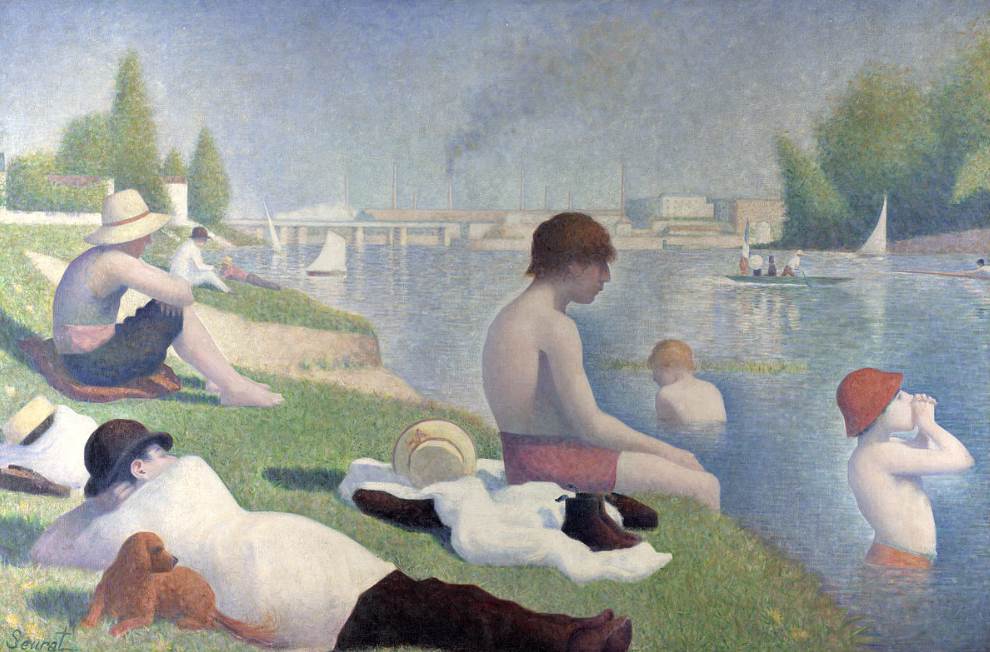
3. Models (Les Poseuses)
- Date created: 1886
- Dimensions: 200 × 249.9 centimeters (79 x 98.4 inches)
- Location: Barnes Foundation, Philadelphia, United States
Models or “Les Poseuses” was the third of the 6 major paintings by Georges Seurat. It was painted as a reaction to the criticism that the Post-Impressionist artist received for his first two paintings. His Pointillist technique was deemed to be too cold and unable to produce a realistic depiction of the subject matter.
The painting depicts a nude model in 3 different poses in an attempt to counter his critics. He included part of his monumental work depicting the Bourgeoisie at La Grande Jatte in the top left corner of the painting. To complete this work, Seurat produced a large number of studies of the nude model.
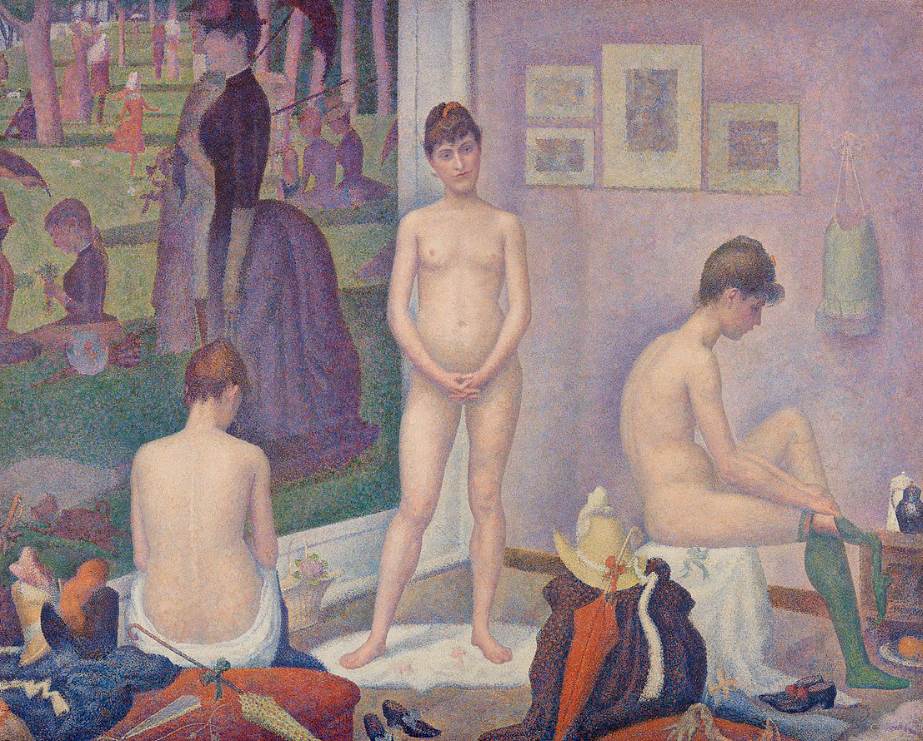
4. The Circus
- Date created: 1890-1891
- Dimensions: 185 × 152 centimeters (72.8 × 59.8 inches)
- Location: Musée d’Orsay, Paris, France
The Circus was the final painting that Georges Seurat worked on before he passed away at the age of 31. It was left incomplete when he died in March 1891. It remains one of the most intriguing Georges Seurat paintings, even though it was left unfinished.
It was the third major painting in a series of works with the subject of the circus. It depicts a female performer who is standing on a horse inside Circus Fernando. This circus was located near the Montmartre district of Paris, not too far from where the artist lived at the time.
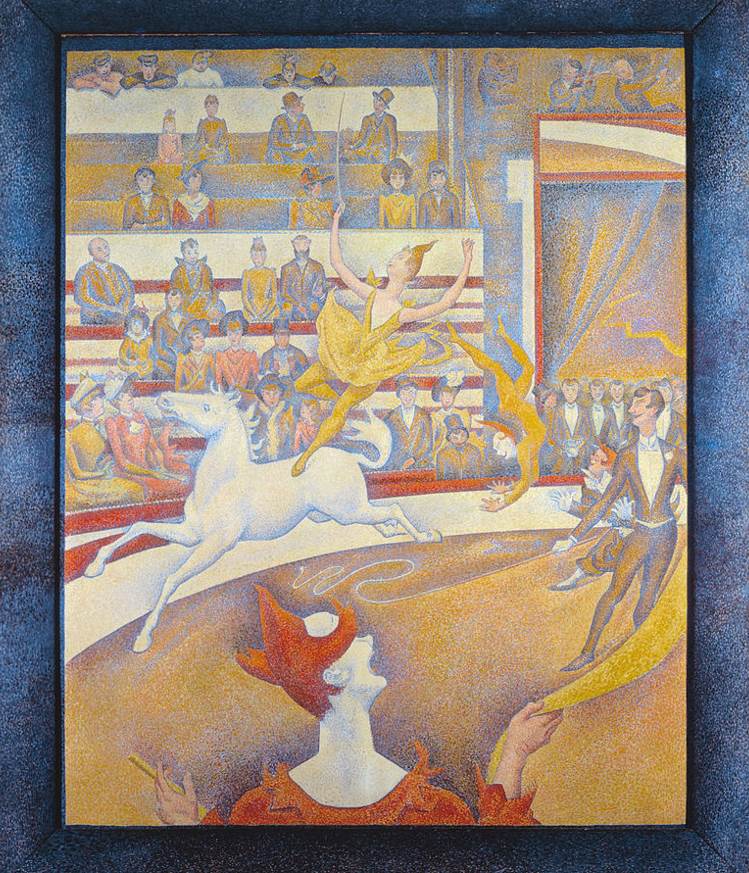
5. Circus Sideshow
- Date created: 1887-1888
- Dimensions: 99.7 × 140.9 centimeters (39.25 × 59 inches)
- Location: MET Museum, New York City, United States
Circus Sideshow or “Parade de Cirque” was the first of the three paintings that features the circus as the main subject. He didn’t have a great start to this series because this painting was heavily criticized when it was first exhibited at the 1888 Salon de la Société des Artistes Indépendants.
The sideshow is a reference to the parade that was held outside the Circus Corvi at the Place de la Nation in Paris. That’s the reason why the painting is rather gloomy as it depicts a scene at night. Regardless of the initial criticism, it managed to become a very influential work of art as it influenced both Fauvists and Cubists in the early 20th century.
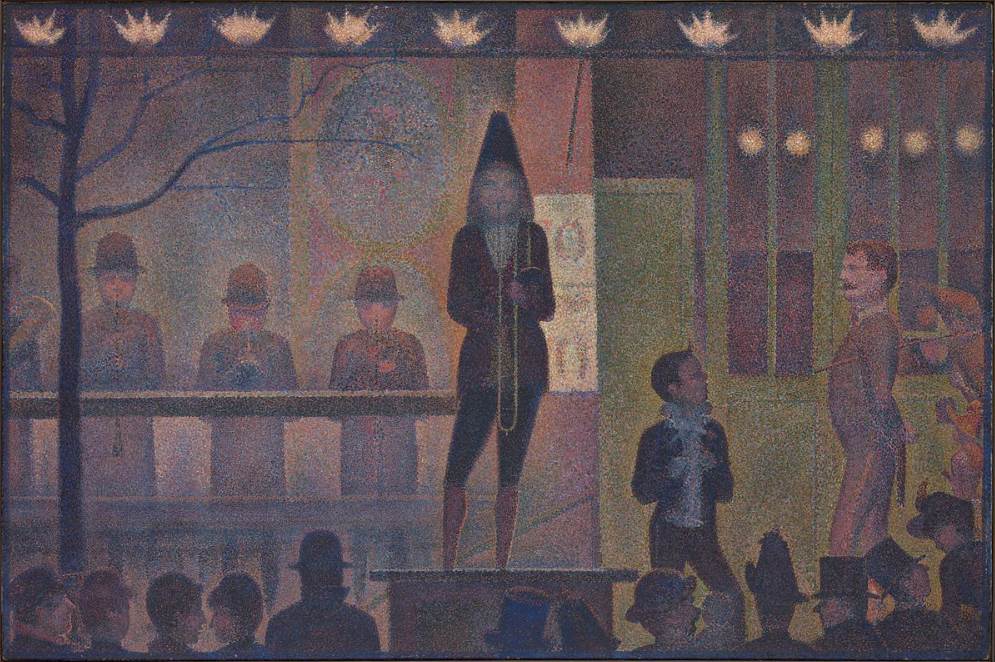
6. Le Chahut
- Date created: 1889-1890
- Dimensions: 170 × 141 centimeters (66.92 × 55.12 inches)
- Location: Kröller-Müller Museum, Otterlo, Netherlands
Le Chahut or “The Can-Can” is the second version of the series of 3 paintings related to the circus. The painting depicts a performance at the Moulin Rouge, the popular cabaret in Paris that opened its doors around this time in history. The Chahut is the name of a popular dance routine that is performed here.
This is one of the most discussed paintings by George Seurat, mainly because of the influence it had on artists of future generations. The painting was generally praised but there were still critics who regarded it as too linear. It did, however, solidify Seurat’s reputation as one of the most innovative artists of his time.
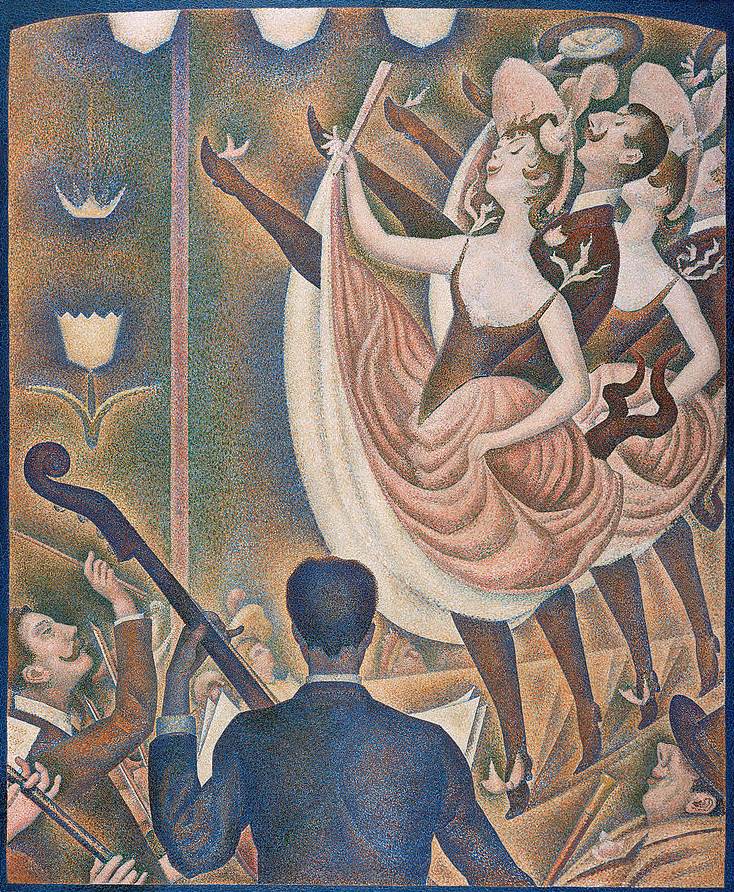
7. Young Woman Powdering Herself
- Date created: 1889-1890
- Dimensions: 95.5 x 79.5 centimeters (37.6 × 31.3 inches)
- Location: Courtauld Gallery, London, United Kingdom
Young Woman Powdering Herself or “Jeune Femme se Poudrant” is a painting that depicts the artist’s mistress, Madeleine Knobloch, while she is putting on contemporary make-up. The artist kept the relationship with his mistress a secret and it was only revealed when this painting was exhibited in 1890.
In the background, we can see a peculiar item hanging on the wall which appears to be a picture featuring a vase of flowers. The original version of the painting depicted a self-portrait of Georges Seurat in a mirror. This means that the artist overpainted the only self-portrait he ever created.
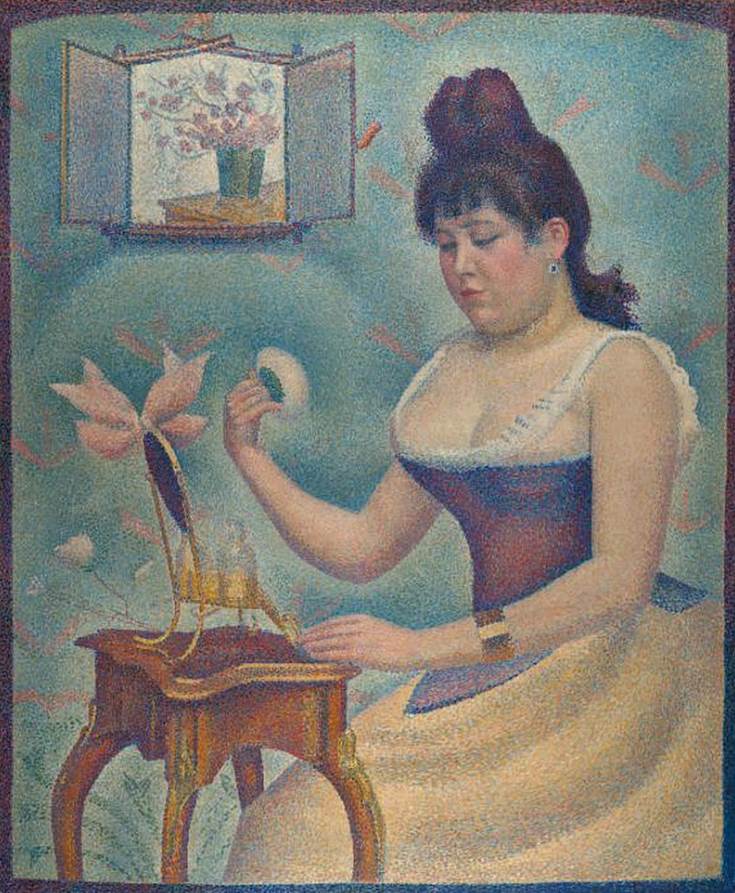
8. View of Le Crotoy from Upstream
- Date created: 1889
- Dimensions: 70.5 × 86.7 centimeters
- Location: Detroit Institute of Arts, Detroit, United States
View of Le Crotoy from Upstream depicts a scenic village in the northern part of France. It’s located in the Somme department of the Hauts-de-France region in the utmost northern part of the country. He often spent his Summer months on the French coast and produced several small paintings and drawings there.
The painting is one of many paintings by Seurat that features remarkable dots on the wooden frame that are distinctively darker than those in the painting itself. This was another trick used by the artist to make the painting appear more colorful than it is because of the Pointillist technique.
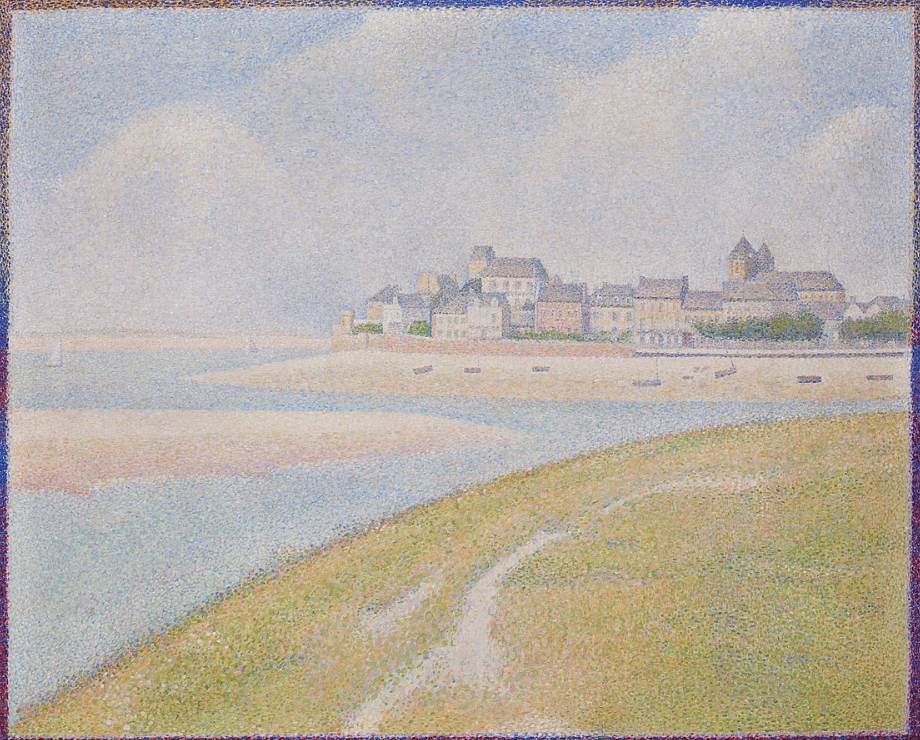
9. Angelica at the Rock
- Date created: 1878
- Dimensions: 83 x 66.3 centimeters (34.64 x 26.1 inches)
- Location: Norton Simon Museum, Pasadena, California
Angelica at the Rock is a Neoclassical painting by Georges Seurat that he completed while he was studying at the École des Beaux-Arts. It depicts a fragment of a much larger painting by renowned Neoclassical artist Jean-Auguste-Dominique Ingres titled “Roger Freeing Angelica.”
Ingres’s painting was inspired by a 16th-century Italian poem titled Orlando Furioso by Ludovico Ariosto. Seurat only painted a fraction of the complete work of the French master. He didn’t include the heroic knight who rescues the princess from the horrible sea monster.
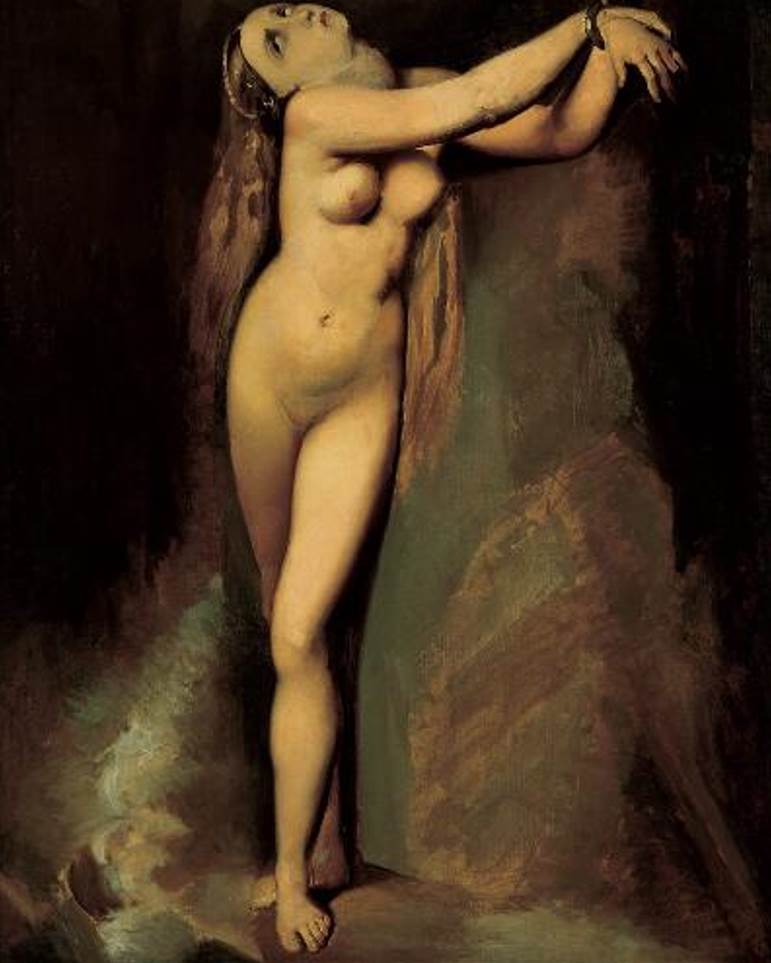
10. A corner of the Harbour of Honfleur
- Date created: 1886
- Dimensions: 79,5 x 63 centimeters (31.29 x 24. inches)
- Location: Kröller-Müller Museum, Otterlo, Netherlands
A corner of the Harbour of Honfleur or “Coin d’un Bassin à Honfleur” is one of the 6 harbor views that Georges Seurat completed in the Summer of 1886. Honfleur is a port city on the southern bank of the Seine River, just south of the major port city of Le Havre in the Normandy region of France.
He made several sketches on paper before he started working on this painting in his studio. Because he was mainly working on his monumental paintings, he didn’t manage to complete this work. This is especially clear in the beige foreground of the painting. Regardless of this notion, it’s considered to be one of his greatest works.
